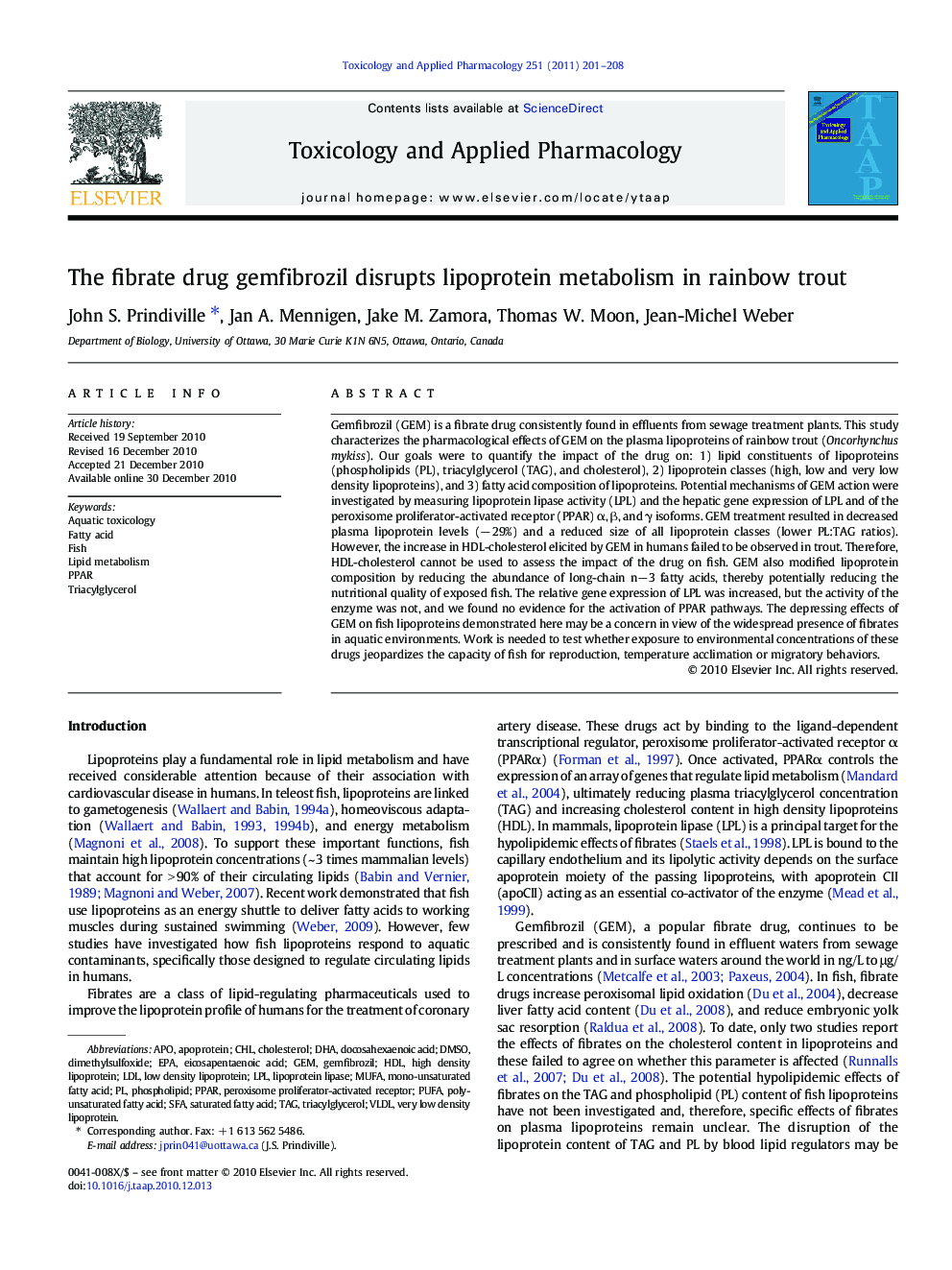| Article ID | Journal | Published Year | Pages | File Type |
|---|---|---|---|---|
| 2569729 | Toxicology and Applied Pharmacology | 2011 | 8 Pages |
Gemfibrozil (GEM) is a fibrate drug consistently found in effluents from sewage treatment plants. This study characterizes the pharmacological effects of GEM on the plasma lipoproteins of rainbow trout (Oncorhynchus mykiss). Our goals were to quantify the impact of the drug on: 1) lipid constituents of lipoproteins (phospholipids (PL), triacylglycerol (TAG), and cholesterol), 2) lipoprotein classes (high, low and very low density lipoproteins), and 3) fatty acid composition of lipoproteins. Potential mechanisms of GEM action were investigated by measuring lipoprotein lipase activity (LPL) and the hepatic gene expression of LPL and of the peroxisome proliferator-activated receptor (PPAR) α, β, and γ isoforms. GEM treatment resulted in decreased plasma lipoprotein levels (− 29%) and a reduced size of all lipoprotein classes (lower PL:TAG ratios). However, the increase in HDL-cholesterol elicited by GEM in humans failed to be observed in trout. Therefore, HDL-cholesterol cannot be used to assess the impact of the drug on fish. GEM also modified lipoprotein composition by reducing the abundance of long-chain n−3 fatty acids, thereby potentially reducing the nutritional quality of exposed fish. The relative gene expression of LPL was increased, but the activity of the enzyme was not, and we found no evidence for the activation of PPAR pathways. The depressing effects of GEM on fish lipoproteins demonstrated here may be a concern in view of the widespread presence of fibrates in aquatic environments. Work is needed to test whether exposure to environmental concentrations of these drugs jeopardizes the capacity of fish for reproduction, temperature acclimation or migratory behaviors.
